18 Safety Tips for Traveling Alone (or With Others)
Considering travel safety tips is one of the top things on the list for planning for solo travel. One of the top reasons people often don’t go on solo vacations is due to a concern about personal safety.
People generally think that traveling alone will make you more of a target, and this fear keeps them from trying it.
I have traveled solo quite a few times on several continents, and I am often asked about safety concerns and travel safety tips. This post is entirely from my perspective of what I actively do to be as safe as possible while on solo vacations.
Though, I do follow many of these tips when I travel with others as well, as I think they are just good practices. If you’re curious to learn more about solo travel and if it’s right for you, this post will help you think through it.
This is in no way meant to be a comprehensive list or a self-defense post. I think traveling solo in any country (your native country or abroad) requires a level of awareness and self-awareness.
I have learned to trust my instincts and to be prepared and so far, I have managed to stay out of trouble. Fingers crossed I haven’t jinxed myself!
I’d love additional travel safety tips, so please comment or message me with your own.
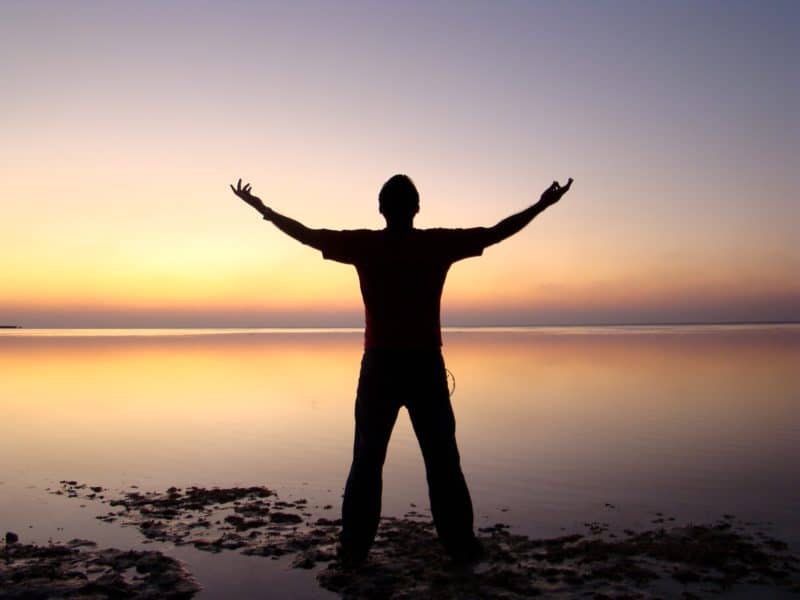
This post may contain affiliate links, which means I’ll receive a commission if you purchase through my links at no extra cost to you. Please read the full disclosure for more information.
Why are Travel Safety Tips Important?
Of course, we all want to have positive experiences when we travel. Unless you book a tour where everything is planned for you, things don’t just happen. You book flights, you make hotel reservations, and you book day tours.
It doesn’t just happen and neither does safety. There is work you do before a trip for planning. And, there’s also work that you do during a trip.
Having said that, it doesn’t take a lot of work to consider your safety when you travel. As you become more experienced with traveling, much of this becomes second nature. But it does take some preparation, solid decision-making, and active diligence when you’re away.
I wrote about the preparation I recommend in a second travel safety post on preparing before you go. This post will be dedicated to travel safety tips while you’re traveling.
I’m going to share my safety tips in two main groupings in this article: personal safety and security and health safety.
Personal safety is more about your interactions with others and your decisions that impact your safety resulting from actions taken by others. Health safety pertains to things like food, water, etc.
You May Also Like 19 Reasons Why You Should Travel Solo
The Myth of Safety in Groups
Many people think travel safety tips are more important for solo travelers than for people traveling with others. I disagree. In truth, I do find I am a bit more focused on my safety when I’m traveling solo. However, that could make me more of a target when traveling with someone else.
Though you may feel more of a target when you’re alone, you’re actually generally more aware than when you’re traveling with others.
When I’m with other people I’m more distracted. I’m focused on our conversation and enjoying their company (hopefully!) and less on what is going on around me. It’s easier to let my guard down and to pay less attention to what is going on around me.
I encourage you to consider these travel safety tips whenever you travel, whether it’s with others or solo. And you can even use these tips when you’re traveling in your own country.
Personal Safety and Security Tips
Personal safety and security in this article are about maintaining awareness around you of other people. It includes activities that I recommend you do or not do to help you to be safer. These are valuable travel safety tips that I have learned over many years of traveling and solo travel.
1. Be Aware of Your Surroundings
This is my number 1 travel safety tip whether you are traveling on solo vacations or with other people. It’s critical to always be aware of your surroundings and to make smart decisions. Some of the things I think about:
- Are there people around?
- Do people you come across make eye contact?
- Are people getting too close to you, surrounding you, or bumping into you unnecessarily?
- Is the area well-lit?
- Is there an area that you don’t have a line of sight to?
If you run into trouble, it’s helpful to be in an area where you see other people. If you yell, will anyone be able to hear you? Take a look around to see what things look like.
It may seem like this is a lot of work but I liken it to driving a car. When you drive, you are constantly scanning in front of you and all around you. You’re looking at other cars and people, animals near the road, and anything that might be in your road blocking your path.
Just like with driving, you’ll do this without thinking after a while.
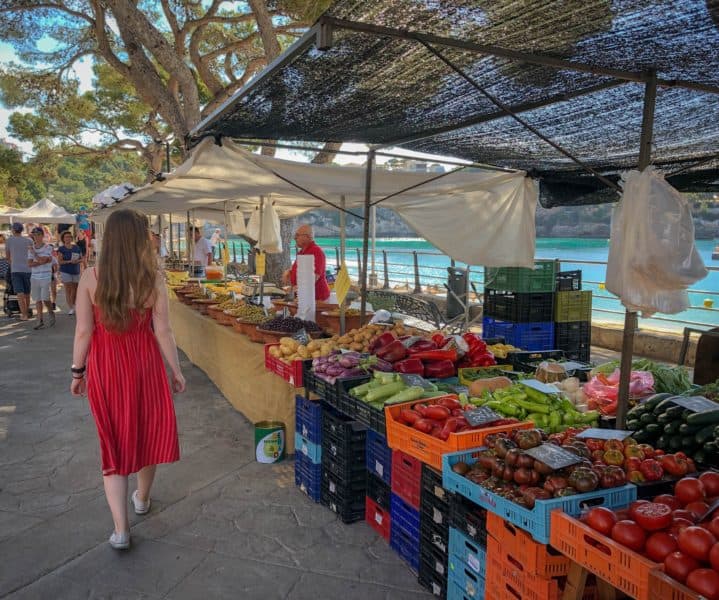
Awareness Applies in All Locations
These can apply whether you are in a city, a small town, or even if you’re hiking in a remote area. I personally haven’t hiked alone if I don’t know the area especially when I don’t speak the language. If I were to get into trouble with other people, an animal, or a fall, I’d have limited ability to get help.
For example, when I recently went to Colombia, I wanted to go hiking in Cocora Valley, in Salento. It was one of the top things I wanted to do while on the trip. But I went to Colombia solo.
I lucked out and met a great gal on the bus on my way to Salento who was also traveling alone. We hit it off and ended up spending much of the time we were visiting Salento together. We were also joined by some other people that we met.
When we arrived at the trailhead, two women from Argentina were starting out and asked if they could join us. My group of one quickly became a group of four. There were a lot of people milling about ready to start their hikes, so it would have been fairly easy for me to approach someone to ask to join them just as the women from Argentina did.
I doubt I would have had issues on hiking this trail alone as it was well populated. Even still, it’s a great idea to pair up to be sure. You can usually join a group on tour if you don’t feel comfortable approaching people.
Examples of Why Awareness Is Important
If people won’t make eye contact or appear to be trying to walk away from you, it could be a sign that something is amiss. If people seem to be clustering around you or bumping into you, there’s a chance that a pickpocket could be lurking.
There are so many tricks that they use to distract you. If an area doesn’t have good lighting and there are dark areas that you can’t see well where people could be waiting, it might be better to pick another path.
If it seems overwhelming to consider this, trust me, you get used to it. I remember driving was overwhelming at first as well. There was so much to look at, to be aware of, and to consider. But after the first few months, it really became second nature. When traveling, we can do the same.
In Paris, I had been warned that groups of young kids are sometimes used to pickpocket as people wouldn’t suspect them and let their guard down around children. In Lisbon, I read that pickpockets often get on buses and trains and do a “snatch and grab,” running right before the doors close.
When I was in Sintra just outside of Lisbon, our walking tour guide pointed out a couple that was taking a lot of pictures and selfies with nothing of interest in the background.
Notice these things, as they could save you the hassle of being pickpocketed or worse. Though in Europe, pickpocketing is more prevalent than more violent crimes, it’s still not fun.
Casually Look Around
Confidence is important when you’re traveling solo. You don’t want to be frantically looking around but you also need to lift your head up and be very aware of your surroundings.
It’s a good idea to not look around frantically as you give off the impression of being fearful. That makes you stand out and could make you a target. Casually take everything in, giving some consideration to the type of area you are walking around and the people you see.
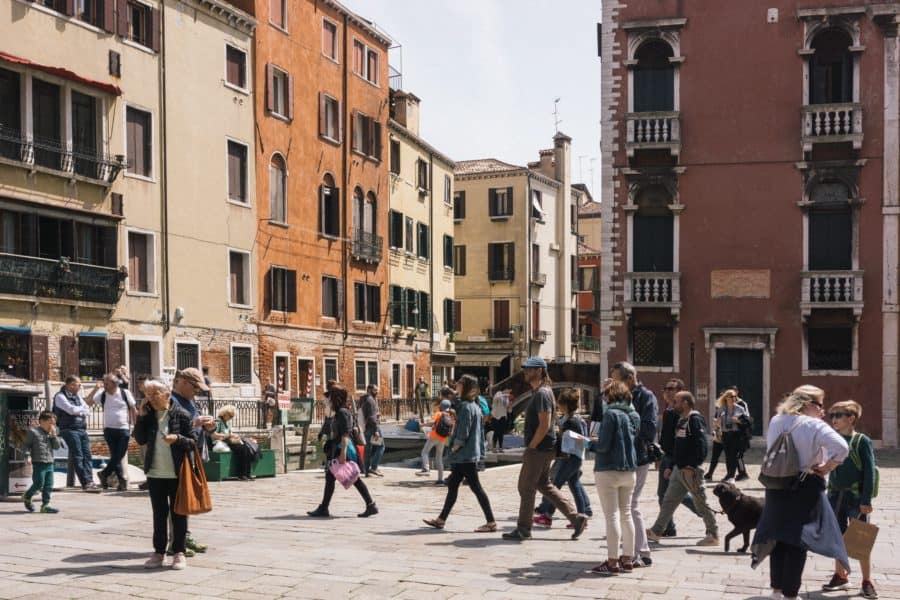
2. Trust Your Gut
This one is so very important and I can’t stress it enough. If you get any sense that something is off or that you may be at risk, trust that instinct. Even if you’re not aware of what specifically is making you feel that way, there is something in your surroundings that is.
Years ago, I read a book by Malcolm Gladwell called “Blink: The Power of Thinking Without Really Thinking.” The book is about a concept called “thin-slicing.”
This is defined in Wikipedia as “our ability to use limited information from a very narrow period of experience to come to a conclusion. This idea suggests that spontaneous decisions are often as good as—or even better than—carefully planned and considered ones.”
In the book, the primary context was in situations where we use a sliver of information about a person to form a larger opinion. I think the same can apply in almost any situation.
If your “spidey sense” is tingling, it’s happening for a reason and you should trust your gut. Especially so on solo vacations, but certainly, it’s a good idea to do so any time this happens.
Of course, this doesn’t mean to run screaming from the place you’re in. Instead, casually look around to see if you can determine what caused your alarm. If you can’t, leave the situation before you have a chance to find out.
You May Also Like 11 Myths About Solo Travel and Why You Should Go
Example of Trusting Your Gut
An example where I trusted my gut is when I was traveling solo in Chiang Mai, Thailand. I was in the historic city center. My host, who lived in the city for many years, said it was completely safe, and I would have nothing to worry about walking around alone, even at night.
One night, I was walking around when I came to an area where I wanted to veer off the main road to walk down a small side street to go in the direction of my guesthouse. I started down that path but quickly noticed that there were no people around and the street was not well-lit.
Was it dangerous? Would anything have happened if I continued to walk down it? Probably not, but I was getting that tingle that it could be unsafe. I decided to take a longer route home that kept me on main roads that were populated.
I can’t say something would have happened but I definitely didn’t want to find out.
3. Don’t Wear Earbuds or Headphones
You need to use all of your senses to stay safe when you travel. Being distracted by music and not being able to hear while you are walking around should be done with caution. I personally don’t do it except when I’m on an airplane or on a train.
I especially don’t do it when I ride public transportation. This includes a subway or a tram where people are frequently coming off and on and the cars are generally crowded.
The last thing you want to do is to be overly distracted when you’re walking around or in a crowded subway and not be paying attention to what is going on around you.
The newer earbuds are easier to hide as they have no wires and can be covered by your hair so I think these are a better idea from a safety standpoint. People who may want to do you harm may not notice them so they may not realize you are distracted. However, it’s still not a good idea to do.
4. Know Your Path
It’s difficult to pay attention to what is going on around you when your face is pointed down and you are looking at a phone screen for navigation. It’s a good idea to have a rough idea of where you are going before setting out. Both to be sure you’re not approaching a bad area and also to remain aware of your surroundings.
I’m notorious for having no sense of direction and for getting lost. Always. It’s a regular thing in my world! So, I often have a navigation app open on my phone to help guide my way.
I’m judicious about when and where I use it, making sure I’m in a well-lit area with people around, but not too close. I regularly scan the area and if I have any concerns, I leave it in my pocket.
In some places, phone theft is a common thing. So, holding your phone out, especially when you are distracted, is a great way of getting it stolen.
Making sure you have an idea of where you are going first is a huge help. And if you get lost, it’s a good opportunity to meet someone to ask for directions.
5. Limit Walking at Night
When I’m on solo vacations, I usually try to limit my time walking around at night. I generally try to find a place for dinner near my hotel or apartment, or I eat in for dinner when I get an Airbnb.
I’ll sometimes grab an early dinner wherever I am near late afternoon before heading back. That’s not to say I won’t go out, but I’ll typically stay close or take an Uber if I’m going a distance at night.
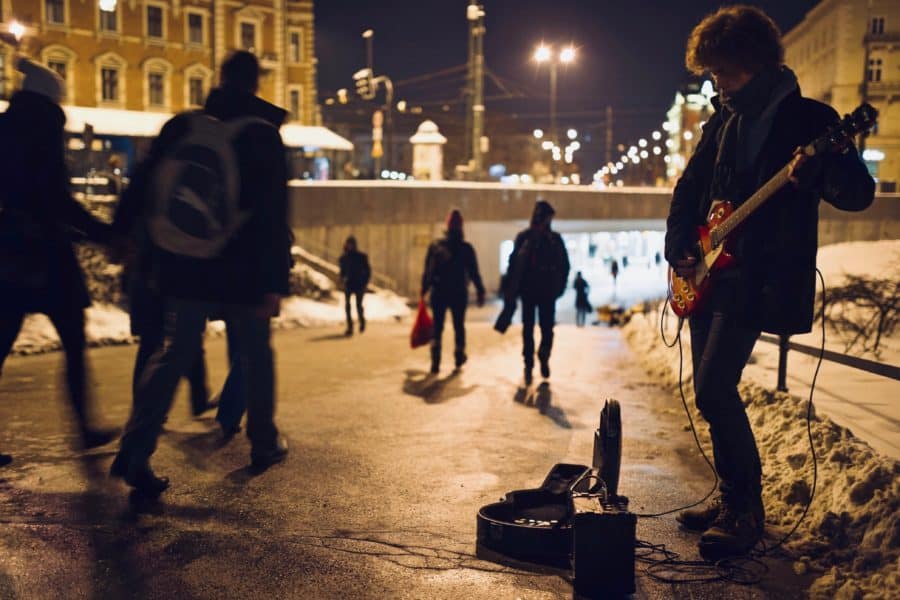
Yes, this does limit what I can do when I travel solo. But, it not only encourages me to meet people that I might be able to go out with, and also it keeps me safe so I can travel again.
Make New Friends to Go out with at Night
When I went to Lisbon, I really wanted to go see Fado. It’s a type of music found in Portugal, almost like Flamenco but with a lot more soul and a strong hint of sadness. Almost like some American blues, in a way. The music is totally different but for that comparison.
My challenge was that Fado is usually played later at night, starting at 9, 10, or later. I found a great place that I wanted to go to called Tasco do Chico. Though I had felt very safe in Lisbon, I was not sure about staying out late at night alone.
The day before I wanted to go, I met a woman from Australia who was also traveling solo. We ended up eating lunch together at a great little restaurant called Taberna sal Grosso.
We were seated at a community table (the place only had maybe 6 tables so space ed was a premium). I mentioned my interest in Fado, and it sparked an interest in her. Voila! I met her there, and it was a great time.
I did end up walking to Tasco do Chico and back as I felt comfortable. But, when we were in Bairro Alto, the “party area” of Lisbon, we walked around together. It was a lot of fun to have a companion for a short part of the trip.
6. Use Caution When Drinking
We let our guard down when we are drinking and don’t always make the best decisions. Certainly, a drink with dinner is no big deal.
But if you’re going out to a bar for the evening and setting back a few, that’s when our judgment can be impaired and our focus is limited. It’s just good common sense to limit your drinking when traveling solo.
If you’re going to be out drinking late, it’s a good idea to call for an Uber to pick you up. You don’t want to be walking around at night when you’re not paying attention
Particularly if you’re less-than-gracefully staggering a bit home (no, I’m sure you have never ever done that! Nor have I, of course).
When I went to Colombia, I had a fun night out in Salento. There is a restaurant on the little square that becomes a booming nightclub—who would ever expect that in such a tiny town?
I felt very safe there, even walking around alone at night (a really good thing as Uber doesn’t run there). But even still, I made sure not to overindulge and still had a really great time.
Keep Your Eyes on Your Drink
When you are out drinking and especially when you’re out alone or with people you recently met, you should keep your eyes on your drink.
You never know people’s intentions, and it’s a good thing to be aware to make sure no one slipped a little extra something in your drink.
7. Do Your Research
Investigate beforehand the area you are going to visit and talk with people who have been there or check travel forums and blogs. You will do this research both before you leave for your trip, but also while you’re traveling, as you may add some places that you didn’t plan on before you left for your trip.
The one place in Colombia where I did feel unsafe is in the neighborhood around the Pedro Nel Gómez Museum. I felt very uncomfortable walking around and kept having a sense that people were watching me.
Then, I was crossing the street in a crosswalk and almost got hit by a car (I had been warned that crosswalks were a “recommendation.” However, I was almost to the curb when it happened). I hadn’t read that the museum was in a particularly bad neighborhood, but I had wished I researched a little further before I went.
When you do your research, you will see cautions in Paris, New York City, and other large cities. Frankly, these safety travel tips are smart for solo and otherwise travel.
I met a lovely couple in Lisbon who had a cell phone stolen as they weren’t paying attention when they were buying subway tickets. Is Lisbon safe? Generally speaking, it is if you use caution and remain aware of your surroundings.
8. Always Keep an Eye on Your Belongings
No matter where you are or what you’re doing, it’s a good travel safety tip to always keep an eye on what you came with. This could be anything and even items that you’d consider low value, like an umbrella.
Why would anyone steal an umbrella? Well, why not? Theft is often a crime of opportunity, so don’t give people the opportunity to steal your belongings.
9. Don’t Play into Stereotypes
It’s hard to have appropriate judgment when stereotypes sway us, and I mean this in two ways.
Robbers Don’t Look Like You Might Expect
First, we often think about robbers being male and creepy-looking. It’s when we hear the music on television shows and movies when we see the “bad guys.” But that’s not always the case, and people who will steal from others always rely on a distraction of some kind.
As I mentioned earlier, In Paris, I had been warned that groups of young kids are sometimes used for pickpocketing as people wouldn’t suspect them and let their guard down around children.
You may not think of this, but I read about this when researching before visiting Paris. I absolutely had my guard up when I was surrounded a couple of times by groups of children. Were they pickpockets? I didn’t want to find out.
Don’t Get Surprised by Preconceived Notions
The second stereotype is more of a preconceived perception. People often think of Colombia as unsafe, so many people will be on guard traveling there, for example. But what about Barcelona? Or New York?
Would it surprise you to know the crime index in Baltimore, Maryland, or Albuquerque, New Mexico (both in the United States) are higher than the crime rate in Mexico City, Mexico? They are also higher than in Bogota, Colombia.
Now, this was based on survey data so there is likely a slant, and each list you see may have different criteria. Murder rates are the most common, which is, of course, very different from pickpocketing and theft.
However, the point is still valid that two cities largely perceived as high crime are safer than two small cities in the United States. Let that sink in for a few moments.
10. Get Advice from Locals
Not only should you do your research in advance, but it’s a great idea to ask locals about their experiences. Are there parts of town you should be especially careful in?
When I was in Medellín, I did a walking tour of the city center. The guide was amazing and cautioned us not to go to the city center at night, whether alone or with other people. He said there is some gang activity to be careful of, even during the day.
After the tour, I asked him if there were other parts of town to be particularly careful of or to avoid, and he shared a few. Also, ask at your hotel, hostel, and anywhere you meet people. Ask on travel forums or do a search to see what comes up.
11. Take Caution with Attire
What you will wear when you’re traveling is a consideration for safety. First, I honor local customs and dress appropriately for where I am and the buildings I will visit.
In Europe, for example, many of the churches require knees and shoulders to be covered for women and sometimes men as well.
Some countries require head coverings for women, and others require more dressy attire to enter certain holy buildings. Not following this is disrespectful, and also marks you as a tourist, and can put you at risk.
Last, I dress in comfortable clothes and shoes. I don’t wear clothes that are overly flowy and would give someone something to easily grab onto, and I wear shoes that are comfortable, so if I’m in a situation where I might need to run, I can do so safely.
Consider a Theft-Resistant Bag
I generally don’t wear backpacks, and if I do, I make sure there is nothing of value accessed through external zippers. If I wear a bag, it’s usually a cross-over messenger-style bag. I make sure the zippers are closed and anything of value is internal to the bag or on my person.
I got a bag that is “theft resistant” and has a metal wire in the strap to make it harder to clip and run. It has locking mechanisms, lots of internal pockets, and an RFID blocker to avoid identity theft.
Of course, I could still get my bag stolen, but these safety measures helped improve my chances of keeping it.
Dress Like a Local
Dressing like a local is another valuable safety tip. To stay safe, you want to blend in and do what you can not to stand out. That doesn’t mean not to dress attractively, but you don’t want to draw attention to yourself for looking like an outsider or a tourist.
You want to dress appropriately for the area. If women are expected to wear modest attire, don’t wear a tank top and short shorts. In some cultures, people may get offended by women who dress like that, even though it may be perfectly acceptable in your country.
You May Also Like How to Know Solo Travel is Right for You
12. Take Uber Instead of Taxis (when you can)
With the increase in Uber (and Lyft) availability, it enables the passenger an additional level of security. I generally will take Uber over a taxi when available for a few reasons.
First, I know it’s a legitimate Uber driver as I see the car type and plate number when I request the car and can match it to the car that arrives.
Second, there is some background screening of drivers. Third, there is a record of the ride and last, I know I won’t be overcharged or hassled. (In some areas, there aren’t meters or the driver may turn off the meter to negotiate his/her own rate.
With a taxi, it’s often advised to negotiate upfront. If you don’t know that, it can be an uncomfortable situation. With Uber, I don’t have to worry if the taxi has a medallion indicating that it’s an approved cab. Or a certificate. Or what identifies a legitimate taxi in the country I’m visiting? I request my ride, confirm, and I’m on my way at a preset price.
When visiting Mexico in my early 30s, I had a taxi pull to the side of the road in a deserted area. I didn’t speak enough Spanish to understand much of what he was saying, but I was very uncomfortable with the situation.
Uber wasn’t around then, but at least they do offer some background screening for drivers and a record of the trip in case you run into an issue. (Thankfully, he continued on to the airport without issue. But it wasn’t a fun experience).
13. Don’t Zone Out on Your Phone
I mentioned this earlier pertaining to using your phone for navigation, but the same goes for anything else you might want to do on your phone. When you’re out walking, it’s not the time to check your email and your Facebook. At least, not with your head down for a prolonged period of time.
You especially want to be cautious about pulling out your phone in a crowded subway car or when walking around at night. But really, it’s not a good idea to use it without being aware of your surroundings while doing so.
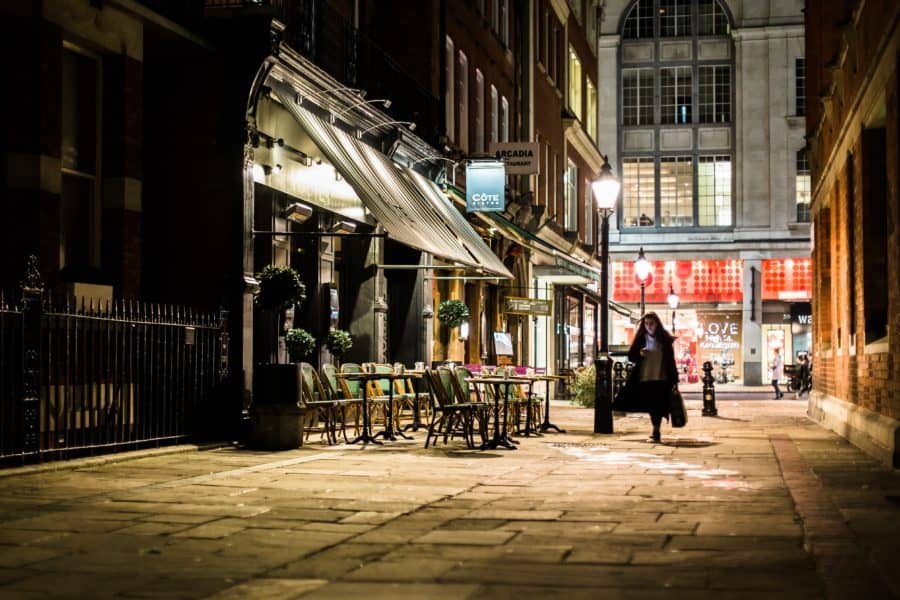
14. Stash Some Cash
Hopefully, you won’t get pickpocketed or worse. But, if you do, you should keep a backup stash of money and a spare debit card tucked away in a room safe or your luggage. You want to be sure you have access to funds if you need it.
Also, consider carrying money on you in multiple places when you travel. I carry a theft-resistant bag with me to help, but I generally have some cash stashed in a pocket or a money belt as well.
And last, it’s a good idea to have a spare wallet with a little cash in it to provide a target for a pickpocket. While you don’t want to encourage the behavior, I’d rather lose a wallet with a few dollars in it than something with hundreds and a credit card.
15. Check In with People Back Home
It’s a good idea to stay in touch with people at home when you’re traveling. Not only should you let someone know where you will be and how to contact you, but you should also be in touch so they will know if something is wrong.
Health Safety Tips
Some safety considerations you may not think about are around your health. These pertain to things you eat, drink, and do.
16. Don’t Drink the Water (Unless You Can)
It’s a good idea to research if the water is drinkable or potable in the country you are going to before you travel. Different countries have different water standards, and not all can filter out some of the organisms and provide purification.
Additionally, there are some organisms in some countries that may not necessarily be harmful but can cause stomach upset if you’re not used to them. Think of “Montezuma’s Revenge” in Mexico.
It’s not fun at all, so it’s a good idea to either purchase bottled water or, even better, bring a water filter or a filtering water bottle that will do the trick.
I recommend the Katadyn Be Free Water Bottle. I found this bottle recently and love it. It’s soft and collapsible, so it only takes up the space of the filter when you pack it. This is tremendous if you pack only carry-on bags when you travel.
I like bringing my own water bottle to be more eco-friendly, and I love that this bottle doesn’t take up a lot of space. A bonus is that you can use it to fill other bottles as you can squeeze the water out.
When I go hiking, or I’m traveling for a full day, I also bring this platypus bag, which packs flat except for the cap.
Also, when you buy bottled water, you must ensure the top hasn’t been tampered with and that it is fully sealed before you open it. When you bring your own bottle, you don’t need to worry about that.
17. Be Careful with Street Food
Street food is amazing in some countries, and I highly recommend trying it. The food is often delicious, and it’s generally a bit cheaper than eating in restaurants.
In many countries, street food is part of the culture. In places like Southeast Asia (Thailand, Vietnam, Cambodia, especially) and in Cambodia, it’s prevalent and oh-so-good!
But how do you know the food is ok to eat? Well, you’ll want to check for obvious things like what it looks like and watch the person cooking it.
Do they appear to be handling the food properly, and do the base ingredients look ok? Do keep in mind, though, that street food may not be cooked at the standard that you’re used to eating in your own country.
A good word of wisdom is to look at where other people are eating. If you see a place with a long line, it’s probably a good bet that it’s relatively safe to eat at and the food is good. This is especially so if you see a lot of people who appear to be locals eating there.
18. Wear a Helmet
Mopeds are a primary means of transportation in some countries. If you’re going to ride one, don’t forget your helmet. It’s just a good idea because as good of a driver as you think you are, others around you may not be as good. Also, consider wearing pants when you ride as “road rash” from accidents is no joke!
If you take an active interest in your safety, whether physical and personal security or health safety, while you travel, you can generally avoid issues.
This isn’t to say if you have a problem that you’re to blame. But following these travel safety tips can help improve your chances of a fun and safe trip, whether traveling solo or with other people.
You Can Stay Safe and Have Fun Traveling Solo
Don’t get too caught up with anxiety over your safety. If you plan in advance for your trip, use common sense, and employ the travel safety tips in this post, you should have a wonderful trip!
You Might Also Like
- How to Know Solo Travel is Right for You
- 19 Reasons Why You Should Travel Solo
- 11 Myths About Solo Travel and Why You Should Go Anyway
- How to Prepare for Safe Travels Before You Go
Like it? Pin it!
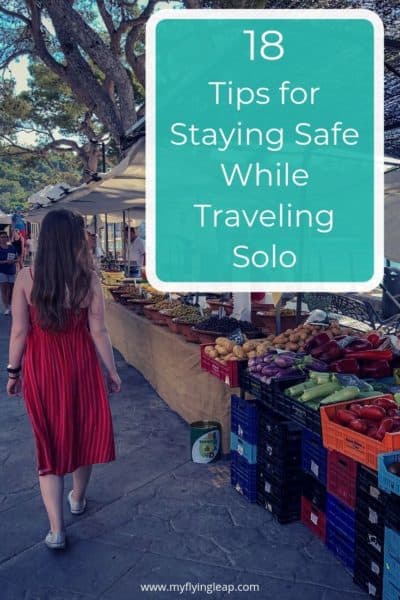
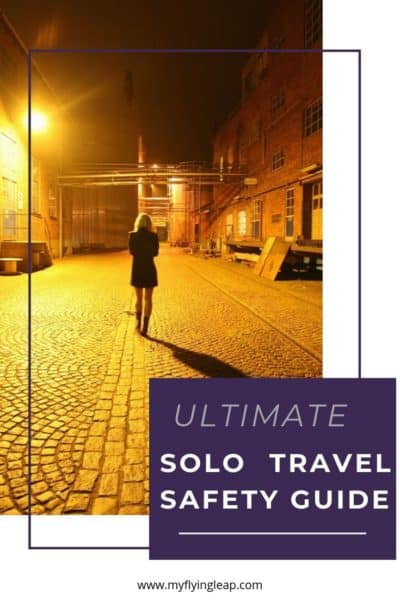
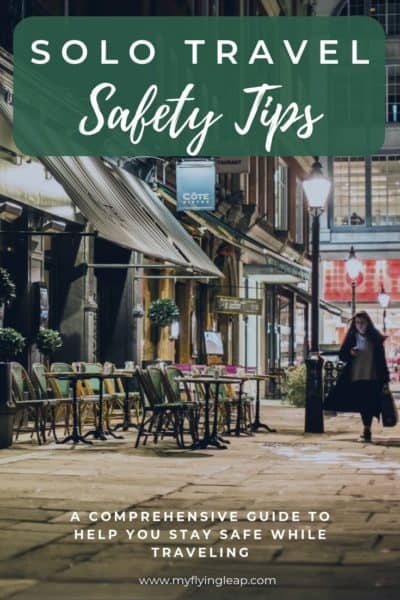
Note: Images in this post are courtesy of Pexels

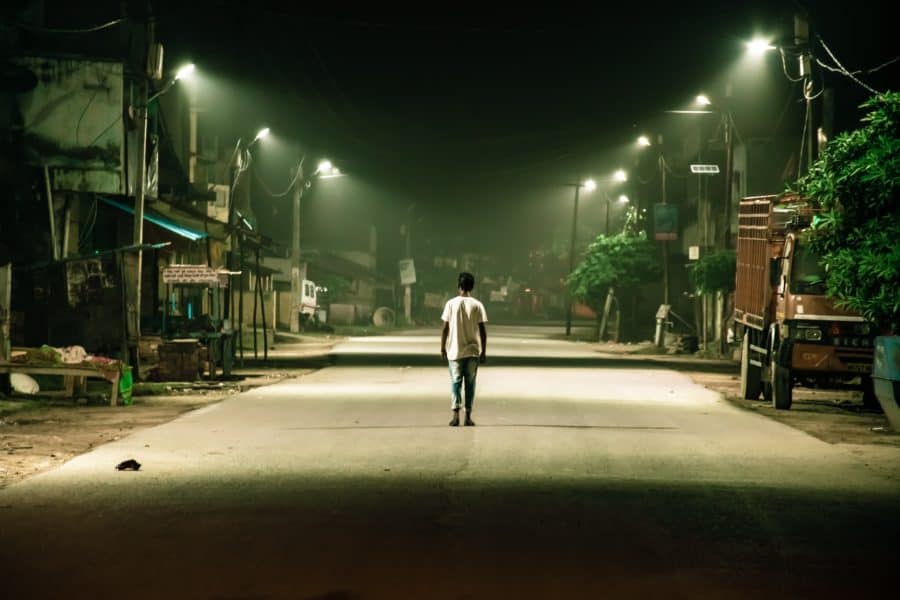
very helpful! 🙂 thank you so much for sharing this, Sam. Will surely share this to my team (WK Adventures).
Glad it will help you and your team!